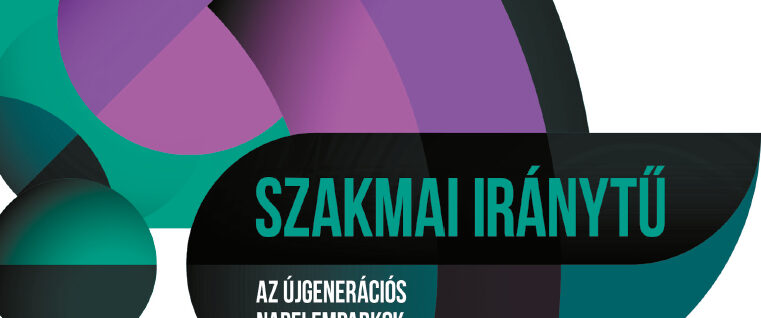In March 2022, a professional guidebook was put together, which provides support to industry players for the development, construction and operation of nature-friendly solar parks, through extensive expert cooperation and nearly a year of work. Organised by SolServices Ltd., the developer-investor of Lumen Park Szolnok, the publication, which is unique at European level, presents the theoretical guidelines and the practical tools for the development of plant- and animal-friendly photovoltaic installations through the example of a fictitious solar park. The publication, prepared by some 30 experts from the seven organisations involved – industry, environmental companies and environmental organisations – is freely available and can be downloaded from www.ujgeneraciosnapelempark.hu.
Renewable energy sources – wind, solar, hydro, geothermal, biomass and biofuels – can provide an alternative to fossil fuels. Their importance is growing: IRENA predicts that while around 100 gigawatts of new photovoltaic capacity are currently coming online globally each year, this figure could reach 370 gigawatts by 2050. In line with this, Hungary’s new National Energy Strategy calls for solar PV capacity to reach 6,000 megawatts by 2030 and 12,000 megawatts by 2040.
Less than 5 percent of the solar farm area is covered by infrastructure (roads, inverters, support poles for panels), so the area that is not covered and partially shaded by the panels – roughly 95 percent of the solar farm area – can be a diverse habitat for plants and animals. In Hungary, there was previously no uniform practice for an ecological approach to the development, installation and operation of solar parks, neither at the professional, regulatory and decision-making level, nor among market players. Due to lack of experience and possible misconceptions, in many cases both solar energy utilisation and nature conservation have been compromised in the implementation of a project.
“By compiling the development guidelines for the new generation of nature-friendly solar parks, we aim to provide guidance to the solar sector to ensure that solar energy can provide clean energy for the country in the long term, in line with the principles of nature conservation and ecological management. In the guide we have collected tools that can be used individually and cost-effectively to achieve the set goals”, said Dr. Gábor Farkas, Managing Director of SolServices Ltd., which has developed and licensed nearly 1000 megawatts of solar park capacity in Hungary in recent years.
The professional guide, created by experts from the participating organisations, not only provides theoretical guidance, but also demonstrates, through a practical example, the development possibilities of environmentally friendly solar parks and the tools that can be used. The guide also describes how to create suitable plant communities and the tools to make the solar park suitable for animals such as insects, reptiles and amphibians, rodents and small game, large game, birds and bats.
ALTEO Nyrt., STS Group and SolServices Ltd. participated in the compilation of the professional compass as industry players, BIOAQUA PRO Ltd. and GEOHIDROTERV Ltd. as environmental experts, and the Kiskunság National Park Directorate and the Hungarian Professional Beekeepers Association as environmental experts. Nearly 30 experts worked on the compilation of the professional guidenance document.
